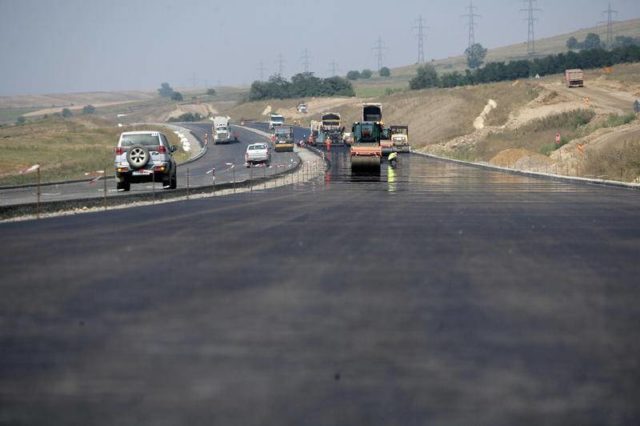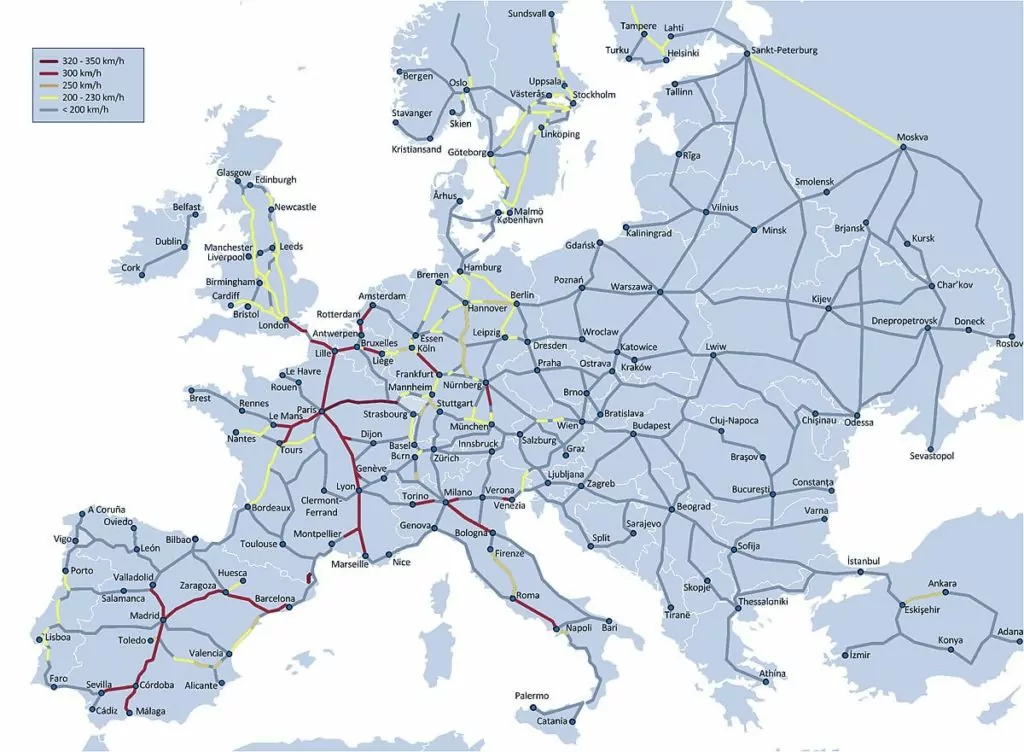
Romania’s Poor Infrastructure Undercuts Its Defense Efforts
Publication: Eurasia Daily Monitor Volume: 15 Issue: 98
By:

Romania’s lack of modern infrastructure hampers its economic development as well its security and defense policies. Without up-to-date roads, highways and rail links, Romania cannot use its interior lines to counter an attack on its territory. Romania’s response in case of an invasion will also be impaired by the crumbling state of existing infrastructure. A potential enemy will just have to target a small number of Romanian transport hubs in order to paralyze or delay the response of the country’s defense forces. Furthermore, without a reasonably developed road network and rail links, forces of the North Atlantic Treaty Organization (NATO) will not be able to arrive in time to help Romania’s military repel an invasion or an incursion.
The current state of Romania’s infrastructure is dire. Only two usable highways exist: Bucharest–Pitești (part of the A1 highway) and Bucharest–Constanța (A2). Neither of these highways connect to each other because the capital, Bucharest, lacks a finished ring-road. Moreover, neither of these highways connect with other European transport hubs. For example, the Port of Constanța is not linked with the western border, and the Bucharest–Pitești highway is not linked with Hungary’s highway network. In order to connect Bucharest with the western border, the crucial Sibiu–Pitești highway, which would cross the Carpathians, will need to be built.
The Sibiu–Pitești segment of the A1 highway highlights another major issue affecting Romania’s infrastructure network: The three main historic provinces making up the country (Wallachia, Moldavia and Transylvania) are not linked by modern highways that cross the Carpathian Mountains. Hardest hit is Moldavia, for which no highway is currently being built. On average, Romania builds only 45 kilometers of highway per year (Bursa, May 7), despite having access to generous European Union cohesion funds.
Romania needs a minimum of 3,000 km of highways in order to ensure its economic development and connections with the rest of Europe. But currently, Romania has only 748 km of modern highways built (Economica.net, January 3) and a further 200 km under construction. It is expected that approximately 100 km of highway will be opened by the end of 2018 (Capital, June 13). However, this figure should be taken with a grain of salt, as the government tends to overestimate the number of kilometers opened in a fiscal year; additionally, quality issues and poor workmanship often reduce the actual figure (Ora de Sibiu, May 18). In 2016, part of the Sibiu–Orăștie highway had to be torn down and rebuilt because it was opened too early, just prior to the 2014 presidential elections. In less than a year, the roadway began to show signs of cracking and crumbling (Economica.net, July 31, 2017).
While Romania lacks sufficient highways, it does have a well-developed, 19,000-kilometer-long rail network. Yet, this rail network, though vital for transporting goods and heavy loads over long distances, has degraded to such an extent that trains run slower over it than they did in the 19th century. The average speed of a freight train is currently 15 km per hour (Hotnews.ro, March 27), while the average speed of passenger rail is just 30 km per hour (StiriTVR.ro, February 21). The modernization of Romania’s railroad network has moved at a snail’s pace due to bad planning, poor management and bureaucratic hurdles, despite also being funded by the EU.

One of the major issues identified by NATO after the annexation of Crimea in 2014 was Russia’s ability to quickly deploy large number of troops near Alliance members’ borders or across the post-Soviet space. The Russian comparative advantage stems from a simple fact: it is a unified state that can move its troops over its territory whenever its leadership wants. On the other hand, NATO is a politico-military alliance made up of over two dozen sovereign states, each with their own complex procedures for deploying foreign troops on their territories.
To remedy this deficiency, the idea of a “defense Schengen Zone” has been floated, which would allow the free movement of forces between European countries with as little red tape as possible. Although Romania supports such an arrangement (Bursa, October 10, 2017), the problem in its case is not bureaucracy, but domestic infrastructure. Romanian roads and rail lines are simply not up to the task of conveying alliance military forces where there are needed in case of an emergency.
In 2015, during the Romanian leg of the “Dragoon Ride” (“Marșul Cavaleriei”) (Mediafax, May 13, 2015), the United States’ 2nd Cavalry Regiment traveled from the Mihail Kogălniceanu base near Constanța, to the Cincu training ground, near Brașov, in central Romania, using the country’s road network. The Bucharest–Constanța highway was used to reach the capital; but in order to make it to Cincu, US and Romanian troops had to use two-lane roads. These narrow streets could easily be taken out of commission in case of war, either by airstrikes or cruise missiles; or they could become clogged with fleeing civilians. Furthermore, to date, demonstrations of force and solidarity and logistical mobility, such as “Dragoon Ride” and most of the allied exercises in Romania, have used relatively light armored vehicles. Tanks, infantry fighting vehicles (IFV), and other heavily armored vehicles have been brought in by train and road transporters. Given the quality of the road network in Romania, sustained operational use by heavy armored vehicles during a crisis or conflict could lead to a logistics nightmare and even compromise the country’s entire infrastructure network.
Romanian decision-makers should understand that a country’s defense is not limited to buying expensive military equipment—it is an all-encompassing societal effort. Good quality road and rail networks are as important for national defense as the latest tank or the most modern air-defense system. Furthermore, Alliance solidarity depends not just on a political consensus, but also on the logistics of transferring military forces from one corner of Europe to another. In Romania’s case, NATO forces risk being held up in a crisis more by the underdeveloped state of its infrastructure than by bureaucracy.



